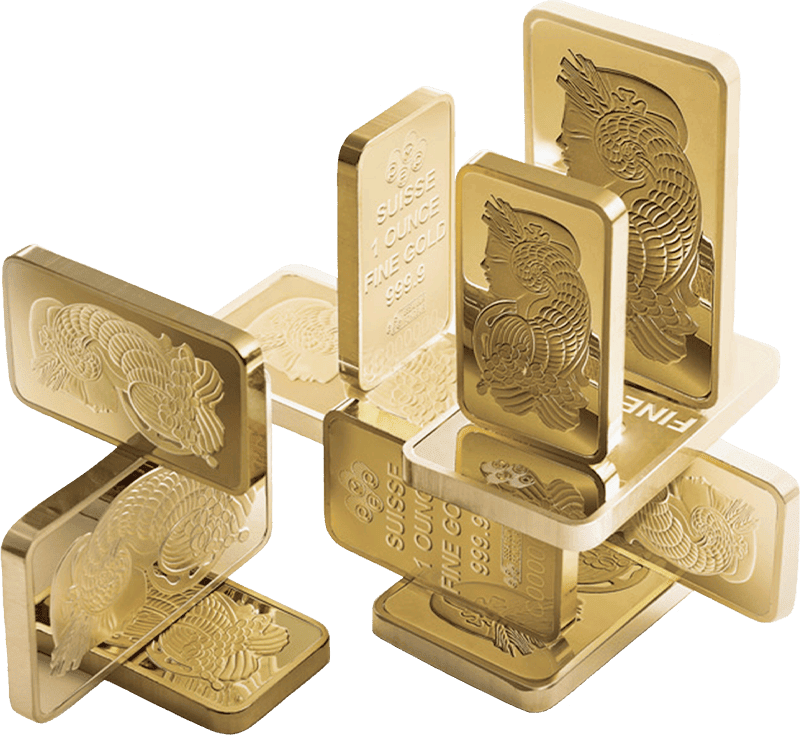
Gold as a Safe Haven in Uncertain Times: Is Now the Right Time to Buy?
23. 05. 2025Ing. Daniel Dvorsky, Content Specialist
Gold has been truly shining of late. Its price has been rising steadily, particularly since the beginning of the year. Geopolitical tensions, market instability, trade wars, and central bank purchases are all pushing up the value of this precious metal. But is now still a good time to buy – or has gold become too expensive? We put these questions to Petr Špičák, an experienced trader and IBIS InGold Key Account Manager.
Gold has risen sharply since the start of the year, breaking through one milestone after another. Does it still make sense to buy now, or is it better to wait for a price drop? We often hear people say, “I’ll wait until the price falls…”.
The truth of the matter is, gold has been on the rise for as long as I can remember. This isn’t just a recent trend – it’s a long-term one. Many clients have been holding off for years, always waiting for “the perfect moment”. The mistake is in thinking your return – and what you do with your gold – is decided at the point of purchase, rather than when you eventually sell. If you’re investing for the next ten years, or buying gold as a hedge against uncertainty, then it makes sense to have it in your portfolio before trouble strikes. You wouldn’t wait to buy insurance until your house is burning down – and the same principle applies to gold as a protective asset.
I like to say, “the best day to buy gold was yesterday, the second-best is today.” Timing the market is incredibly difficult – you never know what Donald Trump might say in the morning, or what geopolitical surprises may emerge. That’s why regular purchases make sense. They let you average out the price over time and benefit from occasional dips.
So how should you buy gold? In a lump sum or through regular, long-term investment?
If you’re able to plan for the long term, regular investing is the better approach. It lets you average out the price, which means that sometimes you buy higher, sometimes lower, but over time you pay the average, which gives you a better shot at a solid return. You can gradually increase your gold holdings in response to assessments of risks. In uncertain periods, for example. And if the price drops a little? That’s simply a chance for you to buy at a better rate.
Of course, there are times when a one-off purchase is the right choice – as a gift, for example, or when dividing up family assets. But imagine waiting for the perfect moment to buy… and it never comes. What if today’s price turns out to be the best you’ll ever see? You simply can’t know that in advance. If I were playing a short-term game, speculating on the price of gold, I wouldn’t be buying physical gold. I’d go for something like an ETF instead.
But if you’re buying gold not just for its price movements, but for its physical nature – to take it home, to hold it in your own hands, to benefit from the anonymity of ownership and tax exemptions – then you’re making use of gold’s other advantages. In this case, gold is a crisis hedge, not a short-term play, and today’s price becomes largely irrelevant. Let’s look back. If you’d bought gold 15 years ago, that would have been a great decision, wouldn’t it?
So if you’re building up gold reserves for the long term, I believe regular investing is the more effective strategy. And that principle applies more broadly, not just to gold.
How do you see the price of gold evolving in the years ahead?
I don’t have a crystal ball, but gold prices are generally shaped by three main factors. Over the long term, the key factor is how much unmined gold is left and how much it costs to extract. Those costs are constantly rising as we mine from increasingly poorer sources. That trend isn’t going away. In fact, it could very well accelerate.
In the medium term, gold is driven by global economic and geopolitical developments. If the economy stumbles or risks grow on the back of rising national debt in Western countries, trade wars, or regional conflict, then demand for gold picks up again.
In the short term, the price reacts to specific events – political statements or sudden economic shocks, for example. All things considered, I believe the long-term trend is upwards. In uncertain times, gold is attractive precisely because it acts as a “safe haven”.

Are you seeing demand for gold increase? And why do you think that is?
Yes, demand is definitely growing. People are becoming aware that inflation and the erosion of savings in current accounts or conservative investment products mean real losses in value. Investing is popular these days, but over time everyone comes to realise that no single tool is foolproof. That’s why diversification is key – never put all your eggs in one basket. Gold is a secure basket. Holding part of your portfolio in gold provides a solid foundation.
In your opinion, what’s the main reason anyone should include gold in their portfolio?
Gold is an anchor, a symbol of stability and security. I like the fact that it’s physical, and that I don’t have to rely on a middleman. That’s why I make full use of the IBIS InGold product range and every available option. I keep some gold at home (up to the sum insured under my insurance policy), some in a bank safety deposit box, and I also use IBIS InGold’s gold deposit service. It combines low costs with liquidity, while still giving me the option to have my investment bars and coins delivered to my home at any time.
What’s your advice for the average investor who’s unsure about whether to start investing in gold?
The most important thing is to start. Indecision will get you nowhere. The rule of thumb is that 80% of outcomes stem from just 20% of actions – typically key decisions. If you’ve got the financial means and want to build a reserve, then get started. Even small amounts, set aside regularly, will add up over time and move you forwards. The key is to take the first step and try it for yourself.
The price of gold will continue to develop, but the best time to start is always now. And if you have any questions, don’t hesitate to get in touch – we’re always happy to help.




